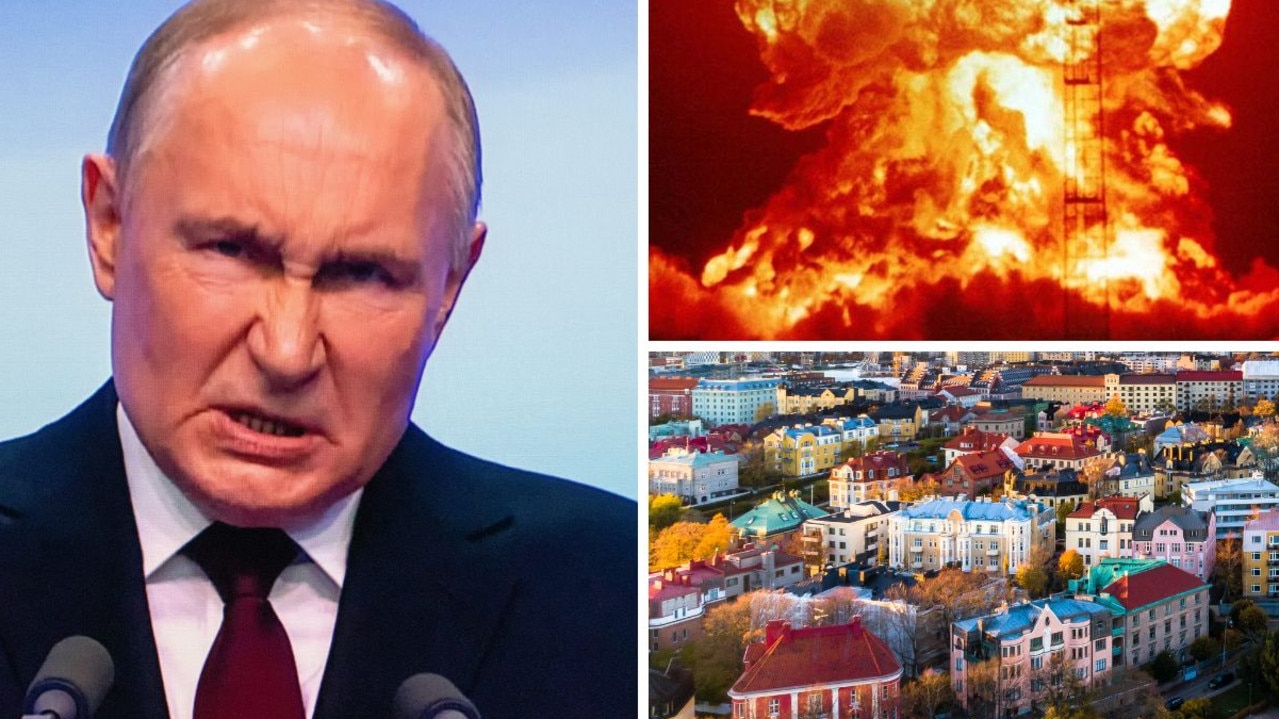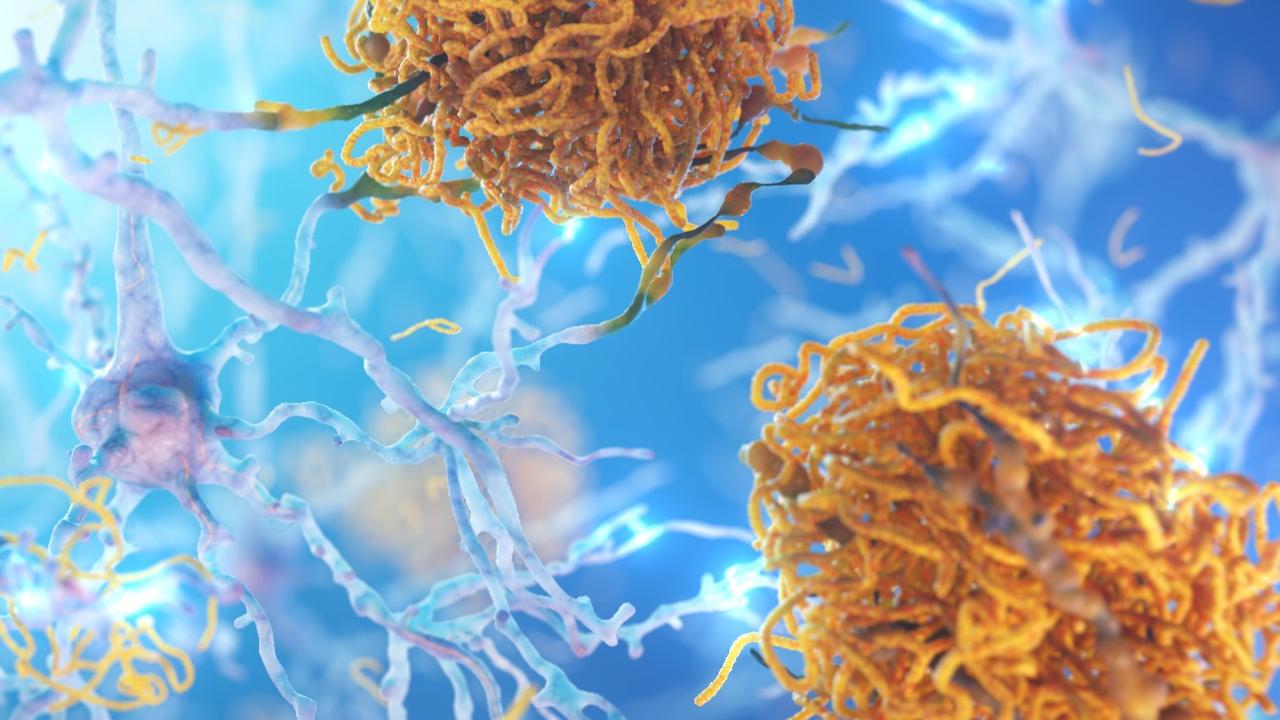‘Playing with fire!’: Huge escalation in war
US President Donald Trump has erupted over the war in Ukraine, while four nations have confirmed a massive escalation three years into the conflict.
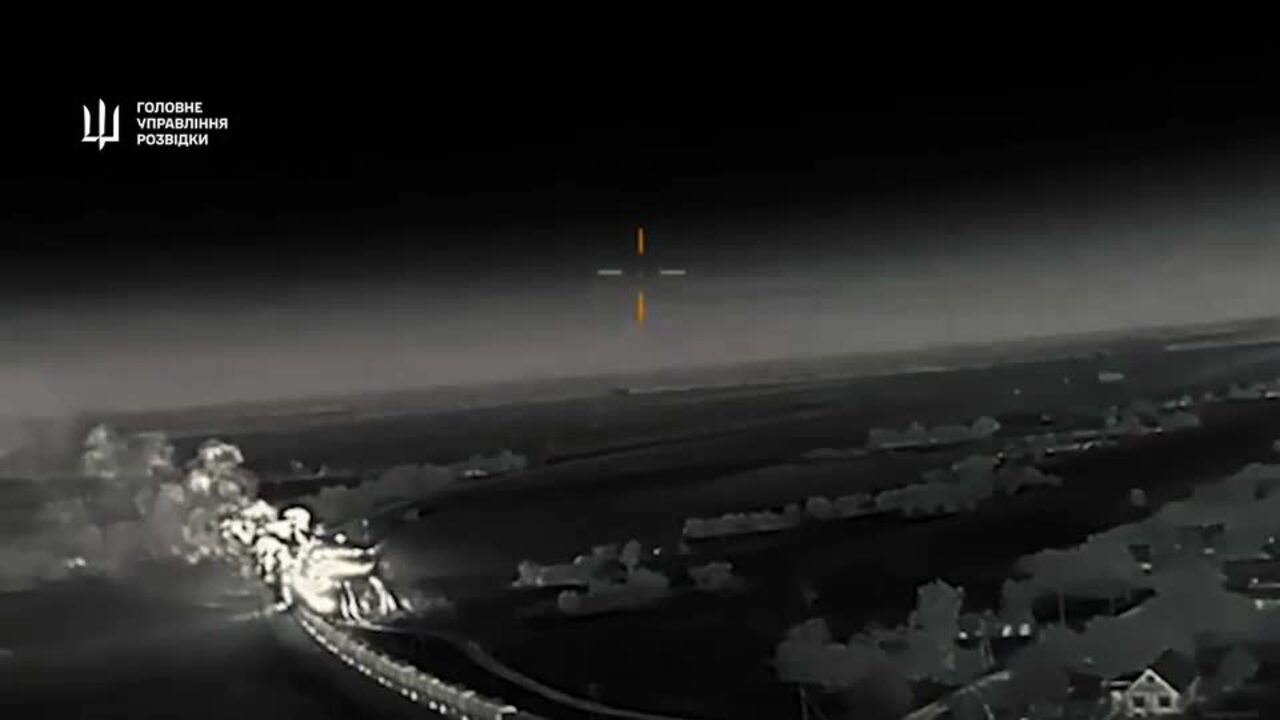
Innovation
Don't miss out on the headlines from Innovation. Followed categories will be added to My News.
US President Donald Trump warned Vladimir Putin that he was “playing with fire,” taking a fresh jab at his Russian counterpart as Washington weighs new sanctions against Moscow over the Ukraine war.
Trump’s latest broadside showed his frustration with stalled ceasefire talks and comes two days after he called the Kremlin leader “absolutely CRAZY” following a major drone attack on Ukraine.
Moscow, which invaded Ukraine in February 2022, insisted it was responding to escalating Ukrainian strikes on its own civilians and accused Kyiv of trying to “disrupt” peace efforts.
Diplomatic efforts to end the war have intensified in recent weeks but Putin has been accused of stalling peace talks.
“What Vladimir Putin doesn’t realise is that if it weren’t for me, lots of really bad things would have already happened to Russia, and I mean REALLY BAD. He’s playing with fire!” Trump said on his Truth Social network.
Trump did not specify the “really bad” things he said he had protected Russia from, or make any specific threats.
But the Wall Street Journal and CNN both reported that the Republican was now considering fresh sanctions as early as this week.
Trump told reporters on Sunday he was “absolutely” weighing such a move.

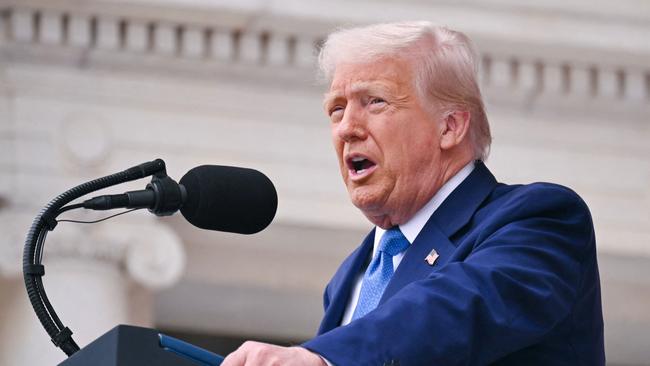
‘Provocative’
The White House said Trump was keeping “all options” open.
“This war is Joe Biden’s fault, and President Trump has been clear he wants to see a negotiated peace deal. President Trump has also smartly kept all options on the table,” Press Secretary Karoline Leavitt told AFP in a statement.
Biden, Trump’s Democratic predecessor, imposed sweeping sanctions after Russia’s invasion. Trump has so far avoided what he says could be “devastating” sanctions on Russian banks.
But Trump’s recent rebukes mark a sharp change from his previous attitude towards Putin, whom he often speaks of with admiration.
His frustration at his failure to end a war he said he could solve within 24 hours boiled over at the weekend after Russia’s drone barrage killed at least 13 people.
“I’ve always had a very good relationship with Vladimir Putin of Russia, but something has happened to him. He has gone absolutely CRAZY!” Trump posted.
Russia has kept up attacks despite a phone call eight days ago in which Trump said Putin had agreed to immediately start talks.
Moscow did not react to Trump’s comments on Tuesday, but it earlier sought to blame Ukraine for the impasse.
“Kyiv, with the support of some European countries, has taken a series of provocative steps to thwart negotiations initiated by Russia,” the Russian defence ministry said.
Civilians including women and children were injured in what it said were Ukrainian drone strikes. Russian air defences destroyed 2,331 Ukrainian drones between May 20 and 27, it said.
‘Eternal waiting’
Ukraine said it was Russia that had targeted civilians.
“We need to end this eternal waiting — Russia needs more sanctions,” Ukrainian President Volodymyr Zelensky’s chief of staff Andriy Yermak said Tuesday on Telegram.
US politicians have stepped up calls for Trump to slap sanctions on Russia. Veteran Republican Senator Chuck Grassley called for strong measures to let Putin to know it was “game over.” Two other senators, Republican Lindsay Graham and Democrat Richard Blumenthal, also called for heavy “secondary” sanctions on countries that buy Russian oil, gas and raw materials.
Trump’s Ukraine envoy Keith Kellogg told Fox News that the next peace talks between Russia and Ukraine, if they happen, would likely take place in Geneva after Moscow rejected the Vatican as a venue.
The aim would then be to get Trump, Putin and Zelensky together “and hammer this thing out,” he added.
The Swiss government would not confirm that it would host the talks. “Switzerland remains ready to offer its good offices,” the foreign ministry told AFP in a statement, adding that it was “in contact with all parties.” Russia and Ukraine held their first direct talks in more than three years in Istanbul in early May.
‘No restrictions’: Huge Ukraine escalation
For the first time since Russia’s full-scale invasion of Ukraine began in February 2022, Ukraine has been given the green light to use Western-supplied long-range weapons inside Russian territory.
Even as optimism over a ceasefire deal slowly mounts, key figures in the EU have remained adamant that the Russian threat must be contained.
The tension and uncertainty over the true extent of Vladimir Putin’s ambitions is clearly rattling cages.
Earlier this month, a report from The International Institute for Strategic Studies warned Russia could be in a position to threaten NATO nations within two years if it is allowed to rebuild its military.
German Chancellor Friedrich Merz confirmed the escalation this week, stating that “there are no longer any restrictions on the range of weapons delivered to Ukraine – neither by the UK, France, nor us. There are no restrictions by the US either.”
In other words, the gloves are off.
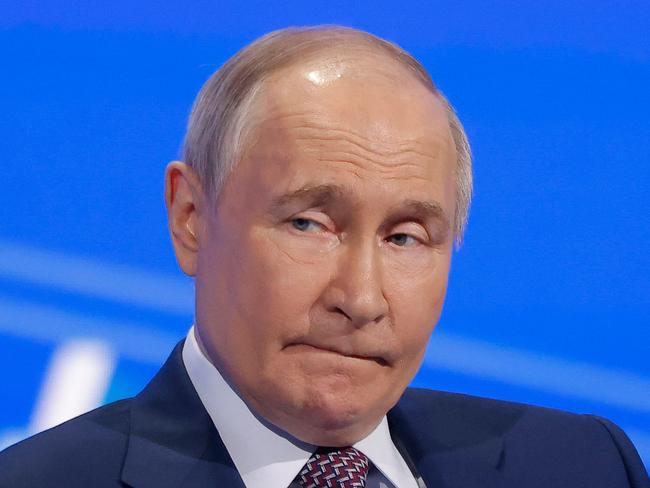
MORE: Putin’s $2.1bn ‘kleptocrat’ mansion exposed
The comment marks a considerable escalation from the West. Previously, missiles such as the British-French Storm Shadow and SCALP, as well as US-supplied ATACMS, came with strings attached.
Ukraine was expected to use them only within its own occupied territories.
But with Russia continuing its assault on Ukrainian cities and infrastructure — and with Ukraine’s capacity to strike back strategically hampered — Western leaders appear to have recalibrated.
“Ukraine can now defend itself, for example, by attacking military positions in Russia. Until recently, it couldn’t do that,” Chancellor Merz said.
But why now?
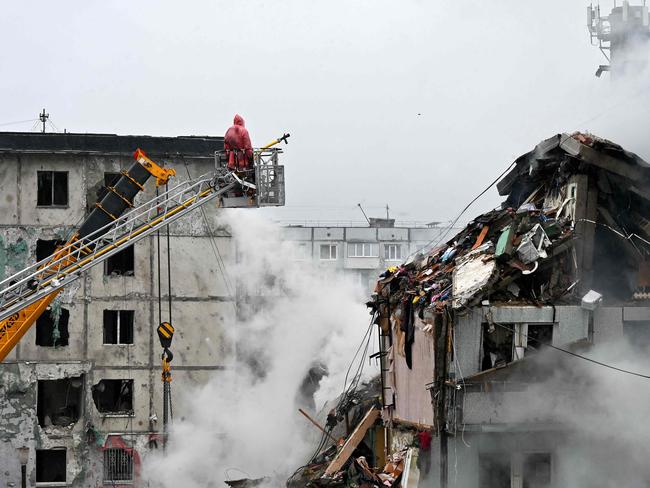
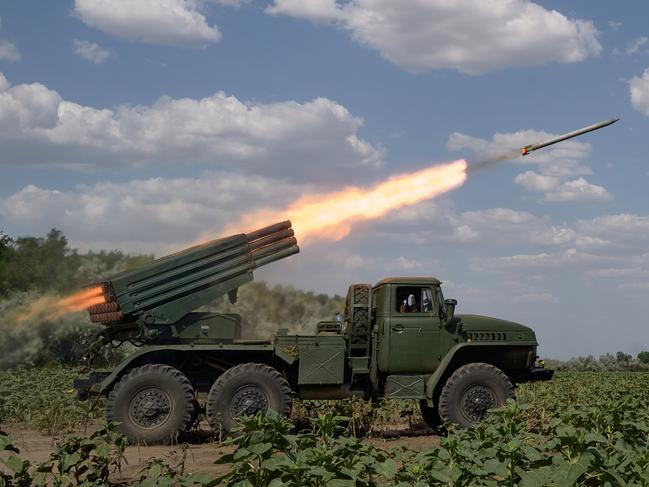
The shift in policy hasn’t come out of nowhere, but the timing raises questions. Why wait three years and after tens of thousands of deaths to authorise strikes beyond Ukraine’s borders?
The initial reluctance stemmed from fears of provoking a broader war with Russia — a nuclear state whose doctrine explicitly allows the use of tactical nuclear weapons in response to existential threats.
But as the war has dragged on and Russia has intensified its bombardment of civilian targets, including kindergartens and hospitals, the political appetite to continue tiptoeing around the Kremlin’s red lines appears to have waned.
For more than a year, Russia has launched missile and drone attacks into Ukraine from positions just over the border, effectively exploiting NATO’s restraint.
The move will likely spur on pro-Russian voices in the media, who have long claimed the West is using the Ukraine conflict as a proxy war to deplete Moscow of resources without openly declaring war.
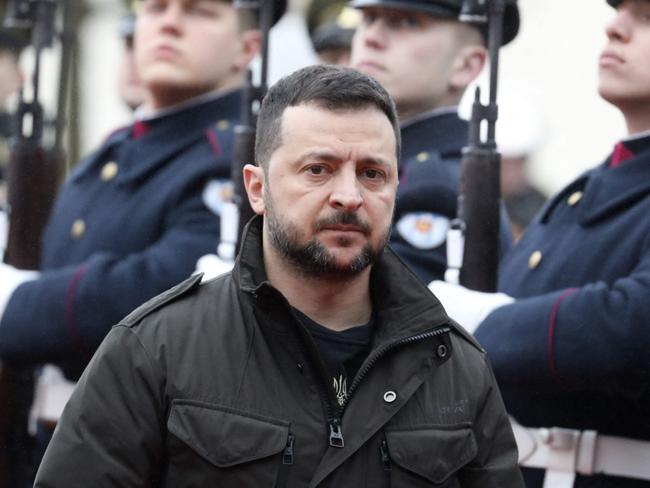
Russia could strike EU ‘as early as 2027’
The IISS report suggests Russia’s ability to mount a credible challenge to NATO could return as early as 2027, particularly if US President Donald Trump succeeds in securing a ceasefire in Ukraine and winds back Washington’s support for the alliance.
This suggests that a lapse in full-tilt warfare would allow Russia to re-establish their battered military and position for another move.
Reports have repeatedly claimed Russia’s land forces have been severely depleted in Ukraine, with thousands of tanks and armoured vehicles lost.
Nonetheless, US European Command chief General Christopher Cavoli says that Russia is already on track to replenish its arsenal.
Putin’s pledge last year to boost active military personnel to 1.5 million is part of that effort.
The IISS report asserts that Russia could rebuild its ground forces to pre-war levels within two years — especially if it shifts to a lower-tech, high-volume model reminiscent of Soviet-era armies.
It warns of “a significant military challenge to NATO allies, particularly the Baltic states, as early as 2027”.
While such a force would lack NATO’s technological edge, it could still pose a serious challenge.
French President Emmanuel Macron and EU foreign policy chief Kaja Kallas have echoed similar concerns, warning that Russia’s military ambitions extend beyond Ukraine.
“It’s a question of when they will start the next war,” Kallas said last year.
For now, international efforts continue to weave through the diplomatic minefield that comes with ending an incomprehensibly complex conflict that has stewed for decades.
But there are signs of movement. Ukrainian President Volodymyr Zelensky recently revealed he is heading to Istanbul for possible direct talks with Vladimir Putin, after the Russian president unexpectedly signalled interest in reviving the long-dormant Istanbul peace track.
Meanwhile, Trump has grown increasingly frustrated at the pace of negotiations and has hinted at walking away if progress isn’t made. One of his major campaign promises was to end the war immediately, mostly to avoid the rapidly multiplying bill for assisting Ukraine.
While Ukraine agreed to a full 30-day ceasefire in March, Russia has yet to reciprocate.
More Coverage
Originally published as ‘Playing with fire!’: Huge escalation in war




